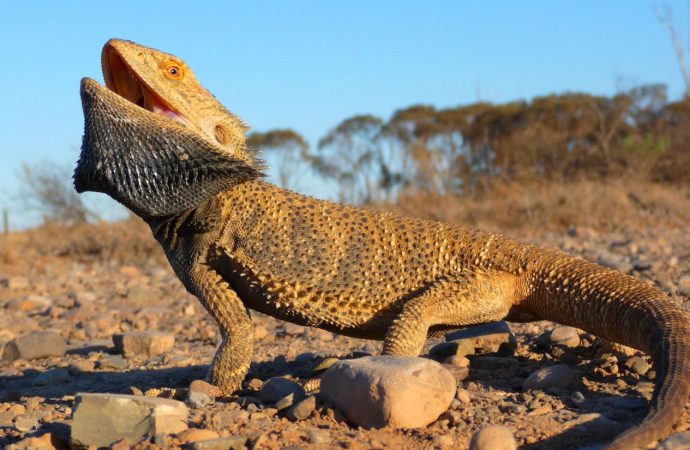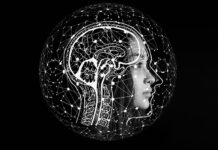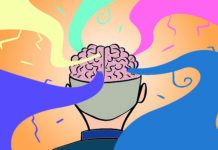Sleeping reptiles show brain patterns resembling sleep cycles in mammals and birds.
Sleep cycles
When we leave the day behind us and nestle ourselves in our cosy beds, we sleep. Sleep, however, comes in stages that repeat themselves. It’s a five-stage cycle that last about 90 minutes in humans. Four stages of non-REM sleep are followed by a period of REM (Rapid Eye Movement) sleep. This REM sleep tends to account for about a quarter of total sleepy-time in adult human beings and, curiously, this stage becomes longer at each cycle.
But what’s so special about REM sleep anyway?
Unlike the other stages, REM sleep tends to be associated with physiological events that look a lot like being awake. So it’s no coincidence that REM sleep is often mentioned hand in hand with dreaming. (Tip: to vividly remember your dreams, have someone wake you during REM sleep. Downside: you’ll probably need fancy equipment to determine whether you’re actually in REM sleep. You could try to work out the timing, though.)
Dreaming animals
We, humans, need sleep. We also need REM sleep. But what about our fellow animals?
Mammals and birds have been found to experience sleep cycles similar to the ones we go through, including REM sleep. Cool fact: smaller animals have smaller, faster sleep cycles. Humans: 90 minutes. Rats: 12 minutes. And this seems to hold when considering other animals. Even large dogs have longer sleep cycles than their smaller cousins.
Does this mean mammals and birds dream too?
That’s a tricky question to answer. After all, we can’t really ask them. But we can monitor their brains during sleep. After being shown a maze with food, the brains of sleeping rats have been shown to fire brain cells that are involved in spatial awareness. Maybe they’re dreaming about navigating the maze to find the food…
Here be dragons
Mammals: check. Birds: check. But what about reptiles?
A new study, performed by a research team at the Max Planck Institute for Brain Research, looked at the brain activity of sleeping Australian dragons (Pogona vitticeps). Although the scientists weren’t originally looking for it, they noticed that the brains of sleeping dragons showed cyclical patterns in activity.
Sounds familiar.
Diving deeper into sleeping dragon brains showed the researchers that the scaly creatures experience periods of brain activity that resemble slow wave sleep in mammals and birds, alternating with something like REM sleep.
They also noticed interesting differences. A dragon’s sleep cycle lasts about 80 seconds. Yes, that’s right, seconds. Also, they are in REM about half the time, which is substantially longer than mammals or birds.
Still, the unexpected existence of sleep cycles, including REM, in reptiles means that sleep cycles (and possibly dreaming) have a much longer evolutionary history than we thought, or that it evolved more than once. Given the complexity of the phenomenon, the authors suggest that a common origin is the most likely hypothesis at this point. But to strengthen this proposal, we need to look at a lot more sleeping brains.
Sweet dreams.
References
Ólafsdóttir, H., Barry, C., Saleem, A., Hassabis, D., & Spiers, H. (2015). Hippocampal place cells construct reward related sequences through unexplored space eLife, 4 DOI: 10.7554/eLife.06063
Shein-Idelson, M., Ondracek, J., Liaw, H., Reiter, S., & Laurent, G. (2016). Slow waves, sharp waves, ripples, and REM in sleeping dragons Science, 352 (6285), 590-595 DOI: 10.1126/science.aaf3621





